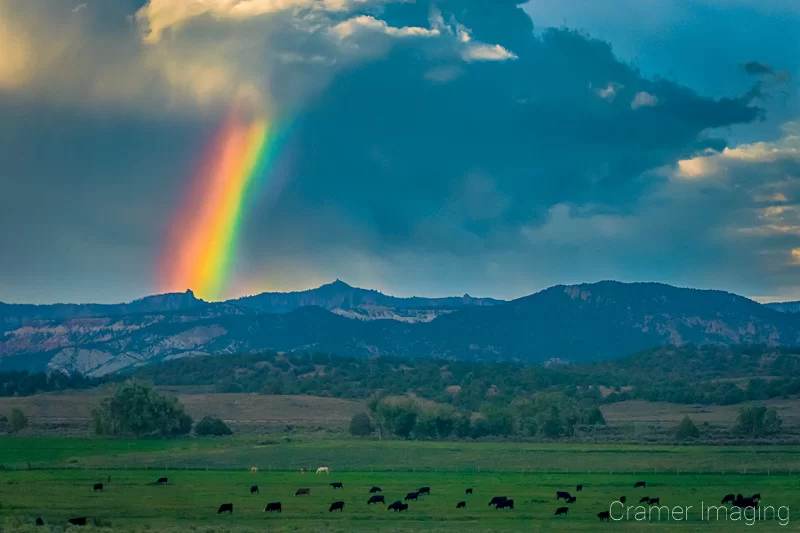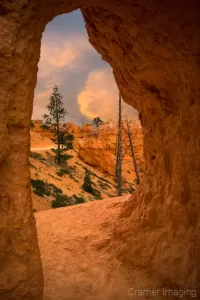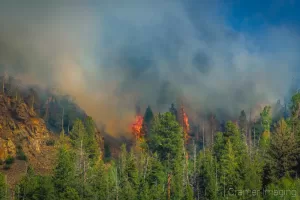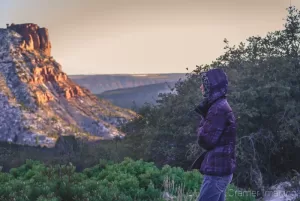
Landscape photography is a broad term which covers a lot. It’s a mostly natural setting with a relatively wide view of the area. However, landscape photographers often add non-landscape elements into their landscape photography for more interest. Today I’m listing a few common non-landscape elements which you might find in landscape photography. Hope you enjoy.
Ever see photos where the photographer made the sun display rays of light? That’s often called a sunburst. However, there are other names for the technique such as starburst or sun-star. This is a simple technique which adds something extra special to certain kinds of landscape photos. So, landscape photographers tend to use it frequently.
If there’s one non-landscape element guaranteed to take your landscape photo from passable to something extra special, it’s a rainbow. There’s something about that burst of colors in the sky which we humans love. The rarity of the phenomenon makes it more worth-while to photograph. It doesn’t matter if the rainbow is partial, a full bow, or a double bow. You’ll see lots of rainbows in landscape photography.
Clouds are such a common non-landscape element of landscape photography that you might think they’re essential. However, there’s plenty of great landscape photos which don’t include clouds. Still, clouds often cap the top of landscape photos. So you can expect to see clouds in landscape photography. Colorful clouds lit up with the rising or setting sun are extra special additions to landscape photography.
How many times have you seen a reflection in a landscape photo? They’re ubiquitous. Landscape photographers love to add reflections into photos where they can. They receive bonus points for using an element of the landscape to add the reflection. Think lakes, ponds, and more. The reflection is not a part of the landscape. It’s a trick of the light. So, this makes it a non-landscape element in landscape photography.
While you easily expect to see the sun (directly or indirectly) in landscape photography, you don’t always expect to see elements of the night. However, such non-landscape elements have become popular in landscape photography. This means you can expect to see the moon, stars, star trails, the Milky Way, and other astronomical phenomena in landscape photos. Thanks to improvements in cameras and camera sensors, this branch of landscape photography opened wide. Now we all enjoy landscape scenes at night on the wall.
Ever seen one of those landscape photos where you know you’re looking through something to the scene? Perhaps you’re looking through a doorway, a window, or some kind of arch. This framing technique has become common in landscape photography. It’s a way of adding context to the scene. While you could look at the opening as a part of the landscape, is it? Is the frame a part of the scene it frames? That’s why this category made this list.

While man-made elements are built into the surrounding landscape, you can hardly call them part of the landscape. You might even consider man-made elements non-landscape additions to landscape photography. You see all sorts of man-made elements like buildings, docks, agricultural equipment, and more. Such elements can really add something to the right landscape photo or they can detract from the same photo depending upon what your goal is.
Just like certain other elements previously listed, fire is an element which you might see in landscape photography. However, it’s not something you see everyday. It’s also very dangerous if out-of-control. You don’t want to try for a landscape photo containing fire if you’re unprepared or in a dangerous area. If you can capture fire in your landscape photography, that’s something extra and dynamic.


Sometimes the best wild landscape photos also contain wild animals. While the animals generally live in the landscape depicted, they’re not a part of the landscape itself. If fact, catching wild animals in a landscape photography scene can be very difficult. Animals are unpredictable after all. Still, the animals elevate the landscape photo into a whole different level of landscape photography. This is why such photos are so prized.
Just like animals, a person positioned correctly in a landscape photo can elevate the photo itself. Humans aren’t part of the landscape either. However, humans are much more predictable. If you need a person, you probably have access to at least 1 for the photo. Adding a human into the landscape adds a sense of size and scale. However, you might consider adding a human being to landscape photography as adding the ultimate non-landscape element to said photo.


So, in conclusion, we find several different non-landscape elements in landscape photography. Some elements are techniques while others are subject matter. Some elements exist on Earth, while others don’t. Still other elements live while others don’t. Other elements altogether even bear evidence of human hands. We find all sorts of things included in landscape photography. Perhaps, next time you look at a landscape photo, you’ll take time to notice elements such as these and how they complete the landscape photo.
Did I miss any non-landscape elements which you can think of? I’d love to know. If I gather enough, I might do a part 2. Share any non-landscape elements in landscape photography I missed in the comments section below.


Receive monthly updates in your inbox from us.

Join our email-only photo of the week club to get the full stories behind how we captured our favorite fine art landscape photos.
We respect your privacy
No More Results